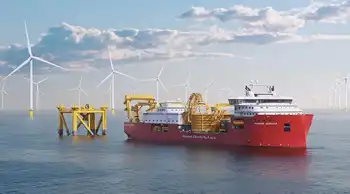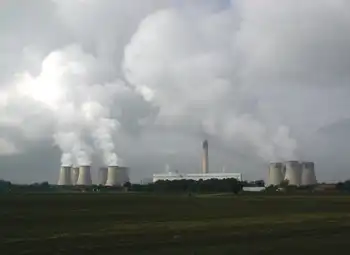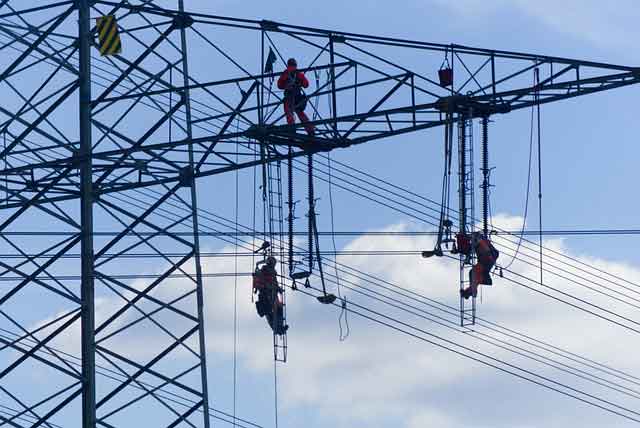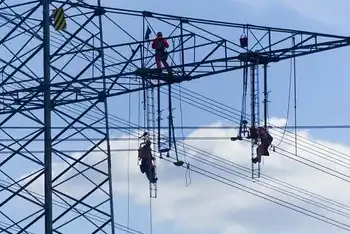Doubts about Brazilian grid linger
By Globe and Mail
Substation Relay Protection Training
Our customized live online or in‑person group training can be delivered to your staff at your location.

- Live Online
- 12 hours Instructor-led
- Group Training Available
Power went out for more than two hours in Rio de Janeiro, Sao Paulo and several other major cities after transmission problems knocked one of the worldÂ’s biggest hydroelectric dams offline. Airport operations were hindered and subways ground to a halt.
A group of muggers took advantage of the darkness to rob people en masse near RioÂ’s Maracana stadium, which will host the OlympicsÂ’ opening and closing ceremonies. But overall, police said, crime did not rise in Rio and fell in Sao Paulo during the outage.
All of neighbouring Paraguay also went dark, but for less than a half hour. A spokesman at Brazil’s Energy Ministry said up to 60 million people — nearly a third of the nation’s population — were affected by the blackout. He spoke on condition of anonymity, as he was not authorized to discuss the matter.
The failure affected more people than the worst U.S. blackout on record: an August 14, 2003 outage caused by power line problems in the Midwest that cut electricity to 50 million people in eight states and Canada.
The Energy Ministry called an emergency meeting, but Justice Minister Tarso Genro minimized the impact, saying Brazil has vastly improved its electrical grid since a series of outages in the 1990s.
“This is a micro-accident among the extraordinary conquests for energy production for Brazil over the last seven years,” Mr. Genro said.
Energy analysts say Brazil has failed to invest enough in transmission lines as demand for power skyrockets amid an extended boom for Latin AmericaÂ’s largest economy.
But President Luiz Inacio Lula da Silva defended his government from criticism that it has not done enough to improve the power grid since he took office in 2003, two years after Brazil suffered shortages and rationing under his predecessor.
“In seven years, we created 30 per cent of all the transmission lines built in the last 130 years,” Mr. Silva said.
Brazilian authorities blamed storms that took down power lines and towers, causing a domino effect that rippled across the region.
Lights twinkled back on along RioÂ’s Copacabana beach, in South AmericaÂ’s largest city of Sao Paulo and in ParaguayÂ’s sleepy capital of Asuncion. But some traffic lights were still out in both Rio and Sao Paulo and traffic officials were expecting drivers to face difficulties the rest of the day, according to local media.
In Rio, Governor Sergio Cabral sent an elite police unit into the streets to help maintain calm in a city known for its crime. The mayor dispatched 300 extra unarmed civil guards to help control traffic.
The city saw a series of robberies around the Maracana football stadium — where the opening and closing ceremonies of the 2016 Olympics will be held, along with the 2014 World Cup final. A police spokesman said a band of roughly a dozen criminals worked the area together, robbing people en masse — a crime phenomenon so routine it is known as a “big sweep.”
A Rio police statement said there was no increase in crime, though it did not give figures. In Sao Paulo, military police said they handled fewer incidents than usual.
Questions remained about what happened and what the fallout would be in Brazil, a nation seen as an ascending economic and political power.
“The image of Brazil, of Rio, is bad enough with all the violence,” said 35-year-old graphic designer Paulo Viera, as he sat in a restaurant a block from the sandy arc of Copacabana.
Standing in an open-air restaurant where patrons were drinking quickly warming beer, Mr. Viera said he worried about how the outage might look for a city that last month was picked to host the Olympics and will be the showcase city for soccer’s World Cup in 2014. “We don’t need this to happen. I don’t know how it could get worse.”
The blackout comes on the heels of a wave of gang fighting in RioÂ’s slums that led to violence fears ahead of the games.
“It’s sad to see such a beautiful city with such a precarious infrastructure,” 22-year-old law student Igor Fernandes said. “This shouldn’t happen in a city that is going to host the Olympic Games.”
The outage occurred when the huge Itaipu dam straddling the Brazilian-Paraguay border stopped producing 17,000 megawatts of power, Brazilian Mines and Energy Minister Edison Lobao said. His ministry said in a statement that outages hit 18 of the 27 states in this country of more than 190 million people. No power outages happened in Brasilia, the national capital.
Jorge Miguel Samek, the head of Itaipu Binacional, the agency in charge of the dam, said there was a “99 per cent chance the blackout happened because of a storm.”
“There was no problem with generating electricity, but a problem with ‘lightning or a storm that took down some towers’,” he said.
The agency said that despite the fact it never stopped functioning, “there was no possibility of transmitting energy because the transmission lines that connect Itaipu to the Brazilian system were disconnected.”
Mr. Lobao also said the hydro plant at the dam itself was working, but there were problems with the power lines that carry electricity across Brazil. Brazil uses almost all the energy produced by the dam, and Paraguay consumes the rest. About 80 per cent of BrazilÂ’s energy comes from hydroelectric power.
In Paraguay, the national energy agency blamed the blackout on a short-circuit at an electrical station near Sao Paulo, saying that failure shut down the entire power grid supplied by Itaipu. All of Paraguay went dark for about 20 minutes, ABC Color newspaper reported.
It is at least the fourth time since 1985 that Brazil has suffered a massive power outage involving transmission lines from Itaipu.
The worst of those, in 1999, occurred after lightning struck a power substation in Sao Paulo state, plunging 97 million Brazilians into darkness for up to five hours.
The blackouts came two days after CBSÂ’s 60 Minutes news program reported that several past Brazilian power outages were caused by computer hackers. Brazilian officials had played down the report before the latest outages, and Mr. Lobao did not mention it.
The Itaipu dam is the worldÂ’s second biggest hydroelectric producer, supplying 20 per cent of BrazilÂ’s electricity. ChinaÂ’s Three Gorges dam is the largest.











